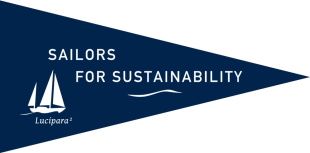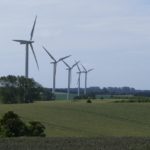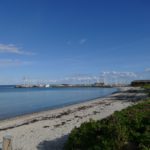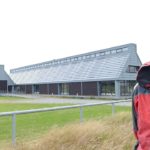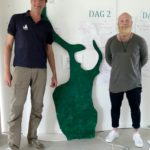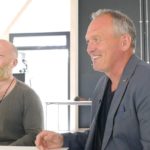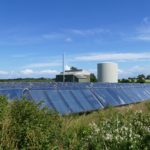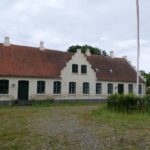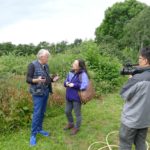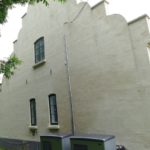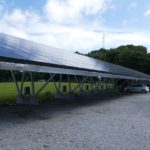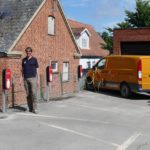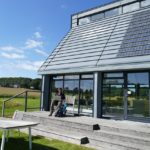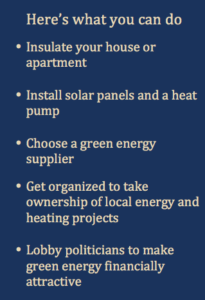Getting Energy on Samsø (DNK)
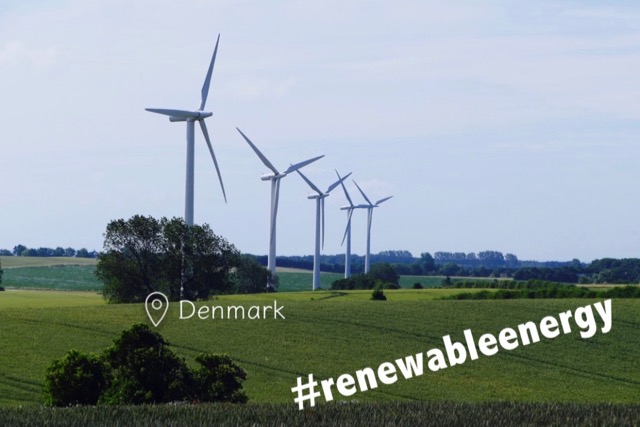
Through engagement of the community and local ownership, the islanders managed to become energy independent with renewable energy.
Contributes to achieving the following UN Sustainable Development Goals:
Samsø is worth a detour and not just for its natural beauty. A few years ago we saw a Backlight documentary (VPRO Tegenlicht) which explained that this Danish island generates its own renewable energy. Its sustainable and self-reliance success story makes the island a source of inspiration for other communities. It also contributed to us choosing sustainability as the theme of our trip. Ever since we made that choice Samsø has been on the top of our list of places to visit.
And we are not alone. Each year thousands of visitors come to the island to learn more about how the island’s energy revolution. This international interest proves the power of the positive example. As such it inspired us in a second way. We too want to show that smart solutions exist and thereby inspire our followers to act in a sustainable manner.
Idyllic Island… with Wind Turbines!
Samsø is slightly smaller than the Dutch island of Texel and has about four thousand permanent residents. It is a popular Danish holiday destination, so in summer thousands of tourists sail there or take the ferry to enjoy the beaches, rolling countryside and picturesque villages. Tourism and agriculture are the main sources of income for the islanders. Yet they chose to place eleven wind turbines on land and another ten in the sea just south of the island. They provide the island’s electricity, but are not really a pretty sight. We wonder how the decision to allow wind turbines on the island came about.
The wind blows a lot around here, as we witness first-hand in the harbour. “BOOM” we hear inside when a Danish sailboat with a somewhat inexperienced skipper crashes into our side. Fortunately, Lucipara’s strong steel hull and rigging keep us from having any damage. The new neighbour is not quite as lucky; his rail is bent and bow light broken. He is still a bit in shock when we help him berth next to us and return the remains of his lamp. It is obvious why the islanders chose wind power to generate their own electricity, but how were they convinced to agree to wind turbines in their vacation paradise?
Decide and Benefit Together
Søren Hermansen and his son Mads explain it to us. Søren leads the Energy Academy, and Mads joins the team during summer. He has become an expert on the subject in his own right. With a small team of nine employees the Energy Academy hosts five thousand visitors a year who are interested in learning about the energy revolution that took place on the island. Among them the Dutch king and queen last year.
Mads explains that it was not easy to convince the islanders. “We talked to the people, a lot. At first there was resistance, because the community did not want wind turbines on the island and did not see any benefits. The solution was to allow everyone to benefit from the proceeds of wind energy. Not only in the form of kWh generated, but also financially.” Wind was chosen because it was a proven technology and the pay back rate was higher than solar panels at that time.
Green Power Shares
To keep the threshold to join low, shares in the new wind turbines were issued at a price of DEK 1,000 (approximately EUR 130). Participants did not even have to pay upfront. They could also pay off in instalments with the return of “their” wind turbine. Under these conditions, many participated. The islanders then decided in close consultation among each other where the wind turbines could be placed best.
The initiative was a great success and gave residents confidence in cooperation. The transformation went on to the next phase when a further ten wind turbines were placed in the sea. The municipality also invested in this phase, as the sea turbines are more expensive. Their capacity is larger than the land-based turbines; 2.3MW versus 1.1MW each. In total Samsø now produces about 130% of its annual electricity needs with renewable wind power. The surplus is used to offset the island’s CO2 emissions, but could one day be used to charge an electric vehicle fleet.
Land and Sun Provide Heat
The next step was to also make heating more sustainable. Four small power plants were built in different parts of the island. They generate heat for the residents close to the plants. We are curious to see them and hire bicycles at the sailing association close to the marina.
Again there is a lot of wind, so at times it’s hard work. The plants are at the edges of the villages and sometimes difficult to spot, that’s how inconspicuous they are. One of them turns solar energy and wood chips into heat, while the other three use straw and biomass waste from agriculture. The farmers get a compensation for the bio waste they provide, which they used to burn because it was worthless.
As with the wind turbines shares in the heating plants were sold to residents. And once again Søren and his team went to the people to explain why it was better for them to get rid of their trusted oil heater. Not just for a cleaner future and independence from oil imports, but also because of the financial gains they could achieve. This scheme was also a great success. Even residents who live too far from the power plant to receive its heat were inspired to go green. Many of them chose to create their own sustainable heat supply, for example by installing a heat pump or pellet stove.
A Special Tour
One of the residents who took his own measures to make his house more sustainable is Jesper Roug Kristensen. He is the Business Manager at the Energy Academy, but in practice he also functions as our semi-private tour guide of Samsø and his own farm. While we visit the Energy Academy, a Chinese TV crew is also there to document Samsø’s efforts. Jesper is taking them to his house and we are allowed to join. Moments after our interview with Mads and Søren we find ourselves in a minivan with Jesper and the TV crew on the way to Jesper’s house. Life is full of surprises!
Jesper proudly shows us his heating pump installation at the back of his house. It eliminates the need for fossil fuel; all that is needed is electricity for the pump to circulate the water. The difference in temperature between the outside air and the air in the ground does the rest. And of course the electricity is green; it comes from the wind turbines. Jesper’s efforts did not stop there. He went on to insulate the floors and windows in his house better and he put solar panels on the garage. Why would he need those, if he has the energy from the wind turbines? Financial reasons, Jesper explains. The solar panels pay themselves back in only a few years, as they deliver free energy and are tax deductible. They provide a part of his electricity needs at the lowest cost. Indeed, all of Jesper’s improvements are not only good for the environment, but also financially attractive. The payback period from his investments in the heating pump and isolation was extremely short due to the savings on energy costs. “If the environmental benefits don’t convince people to make the necessary changes, the financial benefits should.” he argues.
Samsø 2.0
Maybe that is why Samsø’s residents are seemingly not yet keen on electric cars. During our explorations we notice quite a few cars driving around. Mostly with old-fashioned petrol or diesel engines. We confront Søren, who is bemused and confirms our suspicion: the islanders are indeed quite attached to their fossil fuel cars. “Yet we are working on sustainable transport, so Samsø will be completely fossil-free by 2030” Søren adds. Electric transport is emerging, but it is not developing at the speed the director of the Energy Academy would like. Staff of the post office and the municipality currently lead the way by driving electric vehicles. Next to the town hall is a carport covered with solar panels totalling 120 kilowatt to charge the cars. The short distances on the island are ideal for electric vehicles, but for many islanders the purchase cost is (still) too high. The expectation and hope is that improved vehicle technology and lower prices will ensure the turnaround.
Samsø is also working on making one of the ferries to the mainland more sustainable. A ferry currently running on fossil LNG (liquefied natural gas), may run on a combination of locally produced biogas and electricity in the future. The required battery could be recharged overnight with wind power.
The Advice: Do it!
What can we learn from Samsø? Søren is clear: “If you want to achieve change, you should just do it. Do not wait for the government or anyone else. Create a community that meets and inspires each other and manages the work themselves.” The Energy Academy is such a meeting space and acts as a facilitator and accelerator of change.
Ownership and engagement, in other words. When people work together and everyone participates, a lot is possible. People need to feel responsible for what is happening close to their home and become owners of common goods again. “Change starts here, not there”, Søren summarises this decentralised ownership. ‘Commonity’ is the new word for it, a contraction of ‘common’ and ‘community’. “Community is needed to administer the commons and commons is need for community to exist, otherwise it’s just bureaucracy”.
Samsø also proves that there are economic benefits. The tourists keep on coming despite (or because of?) the wind turbines, and renewable energy actually translates into cash savings.
We leave the Energy Academy in good spirits. We are confirmed in our purpose: to show that a transition to a more sustainable society is possible. Positive examples can lead to sustainable and financial benefits if enough people are convinced and participate. What are we waiting for? To work!
A special thanks to Mads and Søren Hermansen for taking the time to meet us and share the island’s history and mission with us, to Jesper Roug Kristensen for showing his house to us and the Chinese TV crew for letting us join them.
Related Sustainable Solutions

Geothermal Energy (NZL)
We explore how the Kiwis make smart use of energy from the Earth and learn that we don’t need fossil fuel-based electricity at all.

Energy Storage (ESP)
On the small and remote Spanish island El Hierro, we visit a world-leading renewable energy storage solution that combines wind- and hydropower!

Solar Energy (ESP)
In one hour enough solar energy reaches the Earth to provide energy for everyone for a year. But how will we harvest and store it? Spain has the solution.
